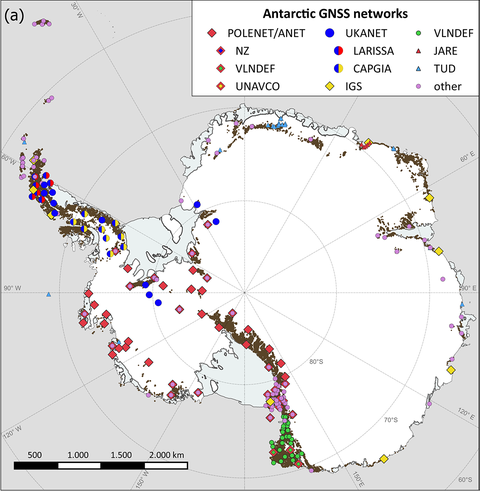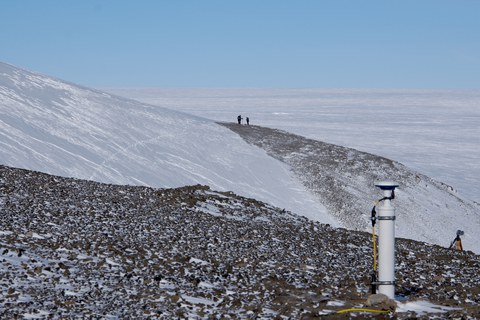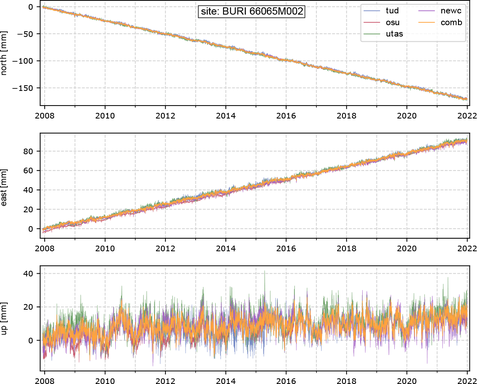May 07, 2025
Displacements of the Earth's crust in Antarctica: Data set from a comprehensive analysis of geodetic GNSS measurements published

GNSS stations in Antarctica
A new, comprehensive data set on the displacements of the Earth's crust in Antarctica was published in the journal Earth System Science Data on 6 May 2025. Scientists from the Chair of Geodetic Earth System Research played a key role in analysing measurement data from geodetic GNSS stations in the Antarctic. These stations record the signals from Global Navigation Satellite Systems (GNSS) with the help of special antennas and receivers, which are then analysed in post-processing.

GNSS campaign site Pine Island Bay, West Antarctica.
For the published study, measurements from almost all available stations distributed across the Antarctic over a period from 1995 to 2021 were analysed and used for the first time. To this end, TU scientist Mirko Scheinert, together with Matt King from the University of Tasmania in Hobart (Australia), initiated the Geodynamics In ANTarctica based on REprocessing GNSS dAta INitiative (GIANT-REGAIN), supported by the Scientific Committee on Antarctic Research (SCAR) and its Geodetic Infrastructure in Antarctica expert group (EG GIANT). The success of the project was only possible because of this excellent international cooperation within SCAR, which made the measurement data available from the many different national Antarctic programmes.

permanent GNSS station Gaussberg, East Antarctica
Four analysis centres - TU Dresden, University of Tasmania (Australia), Ohio State University (USA) and Newcastle University (UK) - initially analysed the data independently of each other using different software, but according to uniform rules, before a joint, combined solution was derived. The most important product of the study are time series of point coordinates with north, east and vertical components for 286 stations, which can be freely downloaded from PANGAEA, the repository for georeferenced earth system research data hosted in Germany.
These coordinate time series form an invaluable basis for further research into the geodynamics of Antarctica. In particular, the Earth's crust moves in response to changing ice loads. The separation between the effects of present-day and past ice mass changes is a highly topical research question. There is international research and discussion on how the glacial-isostatic adjustment can be better described as a reaction of the solid Earth to ice mass changes that go back to the last glacial maximum. Findings from this research form a central link in the assessment of past, present and future changes in continental ice masses and sea level.

Coordinate time series of the GNSS site Butcher Ridge (Transantarctic Mts.); top down: north, east and vertical component.
 © Sven Ellger
© Sven Ellger
Senior Scientist
NameDr.-Ing. Mirko Scheinert
Send encrypted email via the SecureMail portal (for TUD external users only).
